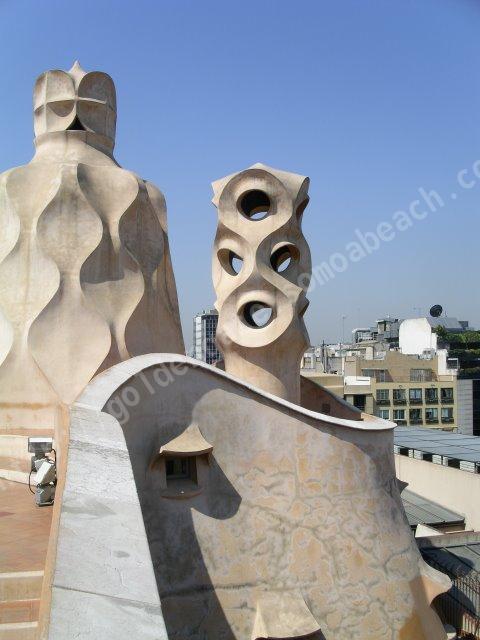
How a Passive Solar Home Design Works
A sunspace or attached greenhouse relies primarily on convection to move heat from the sunny space to other adjacent rooms.
To understand how a passive solar home design works, you need to understand how heat moves and how it can be stored.
As a fundamental law, heat moves from warmer materials to cooler ones until there is no longer a temperature difference between the two. To distribute heat throughout the living space, a passive solar home design makes use of this law through the following heat-movement and heat-storage mechanisms:
-
Conduction
Conduction is the way heat moves through materials, traveling from molecule to molecule. Heat causes molecules close to the heat source to vibrate vigorously, and these vibrations spread to neighboring molecules, thus transferring heat energy. For example, a spoon placed into a hot cup of coffee conducts heat through its handle and into the hand that grasps it.
-
Convection
Convection is the way heat circulates through liquids and gases. Lighter, warmer fluid rises, and cooler, denser fluid sinks. For instance, warm air rises because it is lighter than cold air, which sinks. This is why warmer air accumulates on the second floor of a house, while the basement stays cool. Some passive solar homes use air convection to carry solar heat from a south wall into the building's interior.
-
Radiation
Radiant heat moves through the air from warmer objects to cooler ones. There are two types of radiation important to passive solar design: solar radiation and infrared radiation. When radiation strikes an object, it is absorbed, reflected, or transmitted, depending on certain properties of that object.
Opaque objects absorb 40%–95% of incoming solar radiation from the sun, depending on their color—darker colors typically absorb a greater percentage than lighter colors. This is why solar-absorber surfaces tend to be dark colored. Bright-white materials or objects reflect 80%–98% of incoming solar energy.
Inside a home, infrared radiation occurs when warmed surfaces radiate heat towards cooler surfaces. For example, your body can radiate infrared heat to a cold surface, possibly causing you discomfort. These surfaces can include walls, windows, or ceilings in the home.
Clear glass transmits 80%–90% of solar radiation, absorbing or reflecting only 10%–20%. After solar radiation is transmitted through the glass and absorbed by the home, it is radiated again from the interior surfaces as infrared radiation. Although glass allows solar radiation to pass through, it absorbs the infrared radiation. The glass then radiates part of that heat back to the home's interior. In this way, glass traps solar heat entering the home.
-
Thermal capacitance
Thermal capacitance refers to the ability of materials to store heat. Thermal mass refers to the materials that store heat. Thermal mass stores heat by changing its temperature, which can be done by storing heat from a warm room or by converting direct solar radiation into heat. The more thermal mass, the more heat can be stored for each degree rise in temperature. Masonry materials, like concrete, stones, brick, and tile, are commonly used as thermal mass in passive solar homes. Water also has been successfully used.
For information on other ways to build your home to be energy efficient and earth-friendly, visit these sites:
Green Home Building
Earth Sheltered Homes
This site contains information produced by the US Department of Energy and compiled by the site owners.
We are not responsible for the accuracy or completeness of this information.
Layout and site design copyright 2007 powerfy.com.
